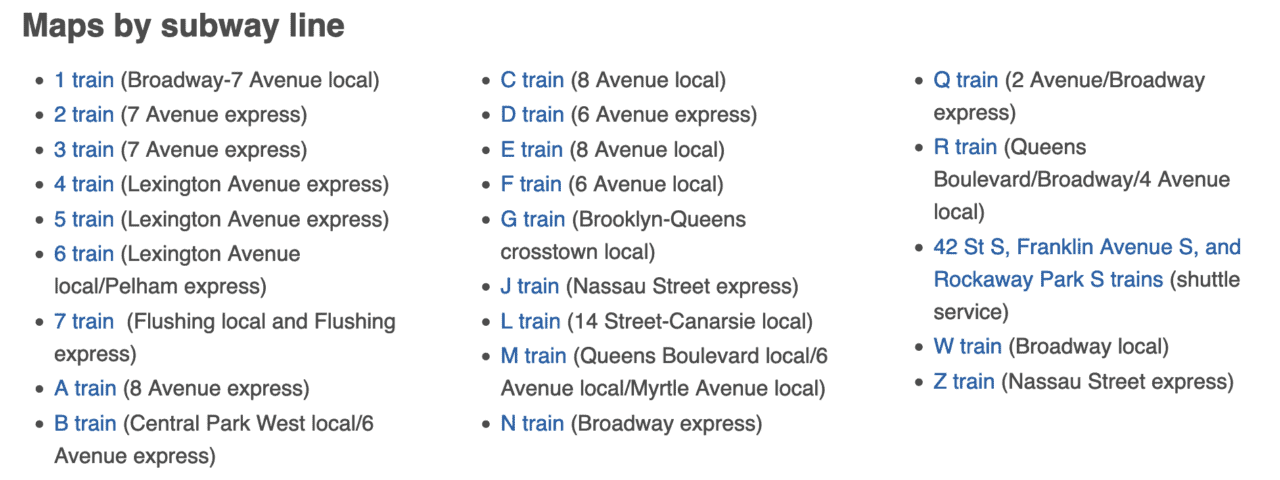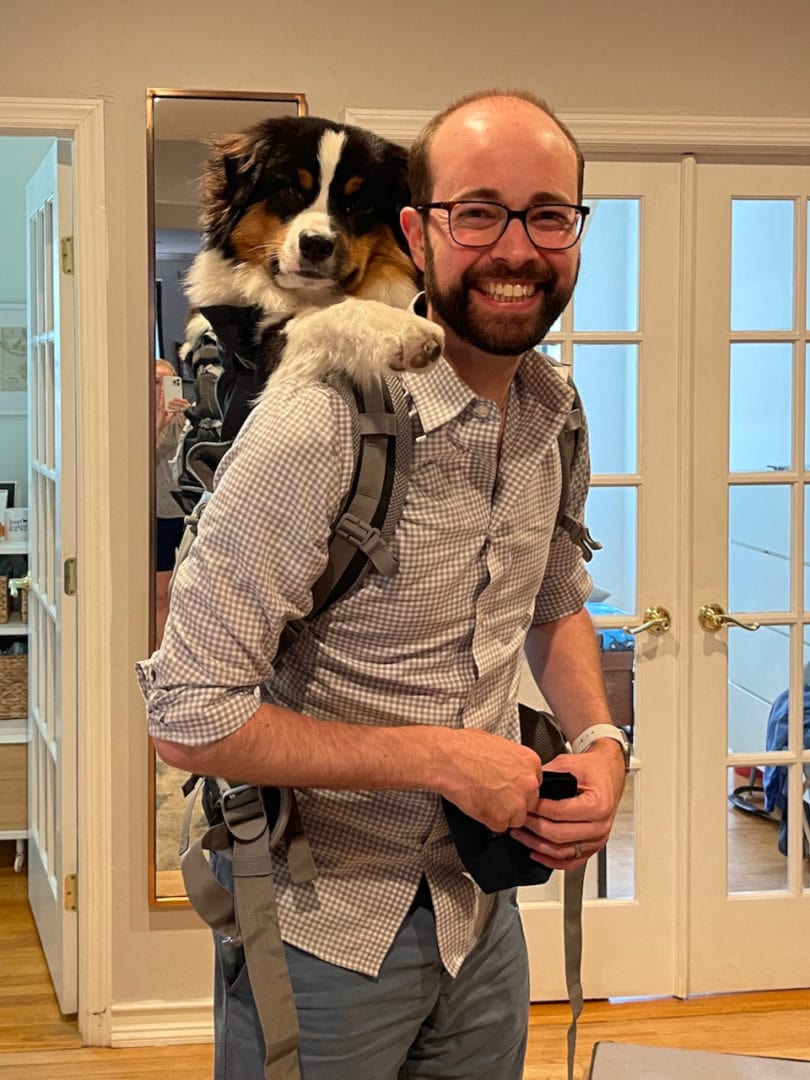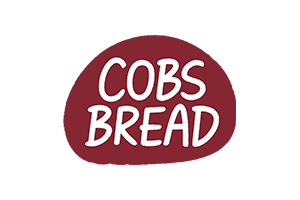Riding the subway in New York City is both my favorite thing and least favorite thing about living in a big city. You're sitting there, looking around at all the other people with their heads down and headphones on and thinking “I live here!” but at the same time, you're thinking “wow this is pretty gross when you think about it” and at that point, you've made it. So how do you get there? How do you ride the train properly?
First things first, you can call it “the train” and “the subway”. You're not on the “the underground” or “the Tube”, people will look at you strangely for those. As for the place you're sitting, I still call them “carriages” but New Yorkers call them “cars”.
1. Avoid empty train cars on the New York Subway
Good gravy this is probably the most important of all the rules.
If the train pulls up in front of where you're standing, and the car in front of you is apparently completely empty, avoid it and run to the next car along.
There are very few good reasons that a train car could be empty: You could have won the train lottery and for some reason, nobody is in there for no good reason, it might be late and there are just very few people are on the train at all, or it's probably something more nefarious.
If a train car is empty it's normally due to one of three reasons:
- Because something has happened inside it that smells;
- It's hot in there because the A/C has broken; or
- Something has happened in there that might be dangerous
In most cases, it's #1 or #2 but it's important to note that in a big city, you should generally follow the crowd where possible. If everyone has moved out of space, you should likely too until you know exactly what you're doing. Avoiding spaces where you're isolated or alone is always in your best interest to keep yourself safe.
Either way, entering a train car that's empty is likely not to be in your interests, so avoid it and quickly jump on the next one.
2. Where to stand & what to hold while riding the NYC Train
I've dedicated hours of my life to educating people about where to stand when you're waiting for a train in New York. I've even written a whole article about it here, but if you don't have time for another article just know this: Do not stand in front of the doors when the train arrives. Get out of the way! The doors are marked on most larger stations' grounds so you know where they'll be arriving, and just take a step back and wait.
In peak hour it can get much more difficult to avoid getting in everyone's way, but it's still important that you try your best to keep the flow of people as smooth as possible.
When you're actually on a train, you've got a few options. The key is to plan ahead: If you're only traveling one-stop, you might want to choose to stand closer to the doors, for example, just make sure though that you don't walk in and stop in front of everyone else!
You can choose to stand as most people do. You'll find poles above your head and 3 vertical poles throughout each train car that you can sidle up to. Between those, you should have enough to keep yourself upright. If you're new to riding the train, don't let go until the train has come to a complete stop (and honestly, until the doors are open) as sometimes you'll get a last-minute unexpected jerk and you'll be thrown into someone next to you who will not be very appreciative.
You can also choose to sit, which is great if you're traveling further distance or need a seat for whatever reason at all. Be kind and let your seat go if someone needs it more than you, but otherwise, it's all yours (just be sure to look before you sit so you don't sit on something funky).
3. The difference between express and local NYC trains
Every single New Yorker has a story about a local train going express, or getting on the wrong train at some point in their life. You'll feel foolish but it's a rite of passage.
Each different train line (represented by colors) has its own local and express trains.

Knowing which one is which is important because in many cases you'll miss your stop if you're not paying attention because you're on an Express that doesn't make all stops and you'll suddenly be way above or way below where you wanted to go and will have to double back.
4. Understanding what they say over the loud speaker
Secondary to stories about express and local trains is the loud-speaker that comes on every so often for an update to the train you're on by the train's conductor. An accurate representation of what you'll hear while riding a New York train is this:
“ihidso odisajoo idjn oooo three four ndskaj A B kdsal express dkajl local kjsakjda all stops”
It truly baffles me how in this day and age we've got sci-fi level tech flying around in our pockets, but we can't install a microphone and speaker that is from this century.
You will then proceed to see a few things:
- Most people will take their headphones out and strain their eyes to train and listen to what is being said;
- Some confused tourists will look around frantically and start asking the people in #1 “What did they just say?”; and then
- A vast majority of people will suddenly get off the train
Here's the secret to living in New York: Nobody knows what the conductor just said, really. They've just done this before and know that it's not normally something good.
What has likely happened though depends on whether your train is moving or not. If the train is not moving, the announcement just explained that you're being held up for whatever reason and they'll be “trying to get moving as soon as possible”. If the train is still moving then the conductor has likely announced that the train you're on is no longer making all the stops it was going to, and it's being asked to make up some extra time by skipping the next few stops.
This means that all the people that were planning on getting off in the next few stops should get off that train, and then wait at the spot where you got off for the next train behind it which will be making all the normal stops.
Just don't tell anyone you didn't understand what was said, that gives away the secret.
4. Paying with OMNY or Metro Express cards
New York has finally upgraded its ticketing system allowing for you to pay with your phone instead of the flimsy little pieces of card all the time.
It's not quite fully rolled out though yet so if you're going to be catching the train often (e.g. You commute to work every day), then be sure to use a real MTA EasyPay Metro Card which has autopay tied to your credit card because it's not only automatic but it's also unlimited travel whenever you want.
If however you just want to jump on and jump off a train irregularly, then the best bet is to just use your phone and OMNY. They're the light-surrounded scanner at each entrance to an MTA station and allow you to hold your phone or credit card up to it and it will automatically charge you the appropriate amount.
In New York, you don't need to swipe off of a train or out of a station, only on (there's no difference in cost to traveling one-stop or ALL the stops.
5. Moving between subway cars
Don't do this.
Nobody does this really and it's not particularly safe. Abide by the rules and avoid this. If you've fallen victim to #1 above, then just wait for the next station and move when the train stops (by leaving the car onto the landing and running to the next entrance).
6. Know how the weather affects the train
Despite the fact that it rains and snows a lot in New York, it appears that nobody told the trains. Snow will change your plans, and so will rain even moreso, so know that if it's currently flooding on the streets then it's likely flooding in the train stations and the trains are likely going to be disrupted.
This can lead to dramatic delays and dangerous situations if you're caught in a flooding station so avoid heading on the train at the height of a storm and stick to the bus (which is the BEST) or another form of above-ground transport.
Summer heat will also affect your travel dramatically but in a different way: It will make it super stinky and gross to be down there. You'll want to limit the amount of time you're on the train or in a subway station during the height of summer, so plan ahead before you enter.
7. Avoiding the noise
This one is more a pro-tip but the subway is NOISY. It's so noisy it's actually damagingly noisy if you're riding it every day.
The volume of screeching brakes and metal on metal can be overwhelming when you first arrive so I highly recommend buying yourself some headphones with active noise canceling so you can avoid the worst of it.
8. Know which side of the road to enter the train station
Trains generally run on the same side as the road traffic above ground.
If you want to go downtown, head to the side of the road that has its traffic driving downtown (or would normally if it weren't one-way) and enter the station on that side.
You will see at the Station entrance if it's a “Downtown” train or an “Uptown” train or it might mention which stop it ends at so you know which way it's going. When you search on Google Maps it will actually tell you which direction train you want and will use the same terminology for which train it is as you will find on the stations to make things easy!
Many stations allow you to enter and then choose once you're down there but some have divided stations and you have to go above ground again to change sides, so it's easier to get it right the first time.
9. Run away from “Showtime” performers on the train
I am somewhat biased because in my first few weeks in New York a “Showtime” performer told me I was standing at a safe distance and then proceeded to kick me in the face doing a spin… I hate them.
Showtime is a type of performance Litefeet/pole dancing done as a busking routine using hand holds installed inside New York City Subway cars. Showtime includes acrobatic flips, hat and shoe tricks, and pole tricks. Estimates have placed the number of Showtime dancers in the low hundreds.
https://en.wikipedia.org/wiki/Showtime_(busking)
They will come on, blast music, and do some spins for your spare change and/or tips.
If you aren't interested, don't watch and keep your eyes averted for the duration. You aren't obligated to pay any money at all.
If you do enjoy it, that's fine too, but if you're going to sit and watch, then be sure to tip appropriately for enjoying the show!
Ultimately, just get out of the way if you see a group coming on with a stereo and who start yelling as if they're about to start to dance. Move away from the center of the train car as that's generally where they'll perform and maintain your distance for the duration so you don't meet the same fate I did.
10. Pets on the New York City Subway
Finally, pets!
The general rule is that pets are not allowed on any of MTA's trains or buses, but there is an exception:
“No person may bring any animal on or into any conveyance or facility unless enclosed in a container and carried in a manner which would not annoy other passengers.”
http://web.mta.info/nyct/rules/rules.htm
Basically, that means that you can take your pet on if they're in a bag, and don't bother other people. There are also exceptions for service dogs and animals working for law enforcement of course!
To end such a wordy article, I thought you might like to see my pup, Roo, in his backpack on a train in New York!

Happy travels!













Sorry to hear about your “Showtime” kick experience. It definitely can get dicey during those performances.
But I would ask for you to do a bit more socio-cultural contextualizing:
As a new resident of the U.S., you may not be fully aware of both the deep cultural dance traditions (african, tap, break) these dancers are continuing or the perpetual economic disadvantages and targeted disenfranchisement that necessitate poor Black and Brown people to dance in a subway instead of say, consult in digital media. I’m sure they’d much rather do the latter if they could.
It’s a very complicated social phenomenon that imo requires a nuanced perspective, some patience, some safety precaution and some empathy.